Text
"When the King delayed over paying her jointure, Mary, quite reasonably, expected her father to back her up, since it was in the dynasty's interest that her status as a royal widow should be recognized. Yet six months later matters were no further forward, and Mary blamed her father for this. In a letter to him written in January 1537, she wrote that all she had received thus far from her father's suit was 'no effect but wordes.' She asked, as she had 'oftymes' asked before, that her father would 'grante me lewe to com up and sue myne owne caus...[I] do not dowt bewt wrapon the rygthe ther of hes hyeghns shuld be mowed to have compasyon on me.' In short, she did not believe her father had done his best for her, and she thought she would be more successful on her own, though she was careful to couch her letter in traditionally dutiful terms... Norfolk, indeed, was indignant, and wrote to Cromwell that 'in all my lif I never comoned w[ith] her in any seriouse cause or nowe, and wold not haue thought she had be suche as I fynde her, wich as I think is but to wise for a woman.'"
- Nicola Clark, Gender, Family, and Politics: The Howard Women, 1485-1558
7 notes
·
View notes
Text

"The one sent should not fail to pay his respects to some of the lords here, who have influence with the king; and to propitiate the most illustrious and beloved Anne with some trifles, preferably something brave and novel from those parts, which she may know to be worth from 1,200 to 1,300 crowns a year (intertenir la Ill. et Amata Anna con alcuni cosselin piu presto nove et galante di quelle parte, che cognose da ascendemo ad un ducento o trecento scudi lo anno), to be divided among two or three visits."
-Augustino Scarpinello, Milanese Ambassador in England, to Francesco Sforza, Duke of Milan. 1531.
48 notes
·
View notes
Text
“I am your Queen, to whom at my coronation, when I was wedded to the realm and laws of the same (the spousal ring whereof I have on my finger, which never hitherto was, not hereafter shall be, left off), you promised your allegiance and obedience to me…. And I say to you, on the word of a Prince, I cannot tell how naturally the mother loveth the child, for I was never the mother of any; but certainly, if a Prince and Governor may as naturally and earnestly love her subjects as the mother doth love the child, then assure yourselves that I, being your lady and mistress, do as earnestly and tenderly love and favour you. And I, thus loving you, cannot but think that ye as heartily and faithfully love me; and then I doubt not but we shall give these rebels a short and speedy overthrow.”
— Extract of Mary Tudor’s Guildhall Speech concerning the Wyatt rebellion, 1554
26 notes
·
View notes
Text
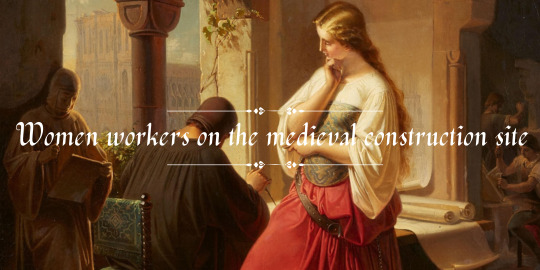
"Women could be found working on construction sites, if only occasionally, including in specialized roles such as carpenters and masons. The research is found in the article, “Appropriate to Her Sex?” Women’s Participation on the Construction Site in Medieval and Early Modern Europe,” by Shelley E. Roff.
She surveyed a wide variety of records from throughout Western Europe, including tax records, inventories of wages paid on construction sites, and municipal accounts, and discovered numerous instances of women working alongside men on construction sites as far back at the 13th century. Most of these women were employed as day laborers, carrying out tasks such as moving water and building supplies around the sites, digging ditches and serving as assistants to bricklayers and stonemasons. For example, in the Spanish city of Seville during the 14th century, women were hired to dig trenches for the foundation of a new city wall, while at the nearby city of Toledo, one or two women were hired each day for the construction of the city’s cathedral, where they gathered lime and worked on the roof. Meanwhile in the French city of Toulouse, almost half the laborers working on the Perigord college site were women. Ross also finds several examples from England and Germany.
Roff notes that previous historians have seen many examples of women working on construction sites in their research, but they had believed that these were just abnormal exceptions caused by economic crises, or because the male population had been killed off through war or disease. But her new study suggests that women construction workers were more than just odd occurences. She explains that “the expansion of urban centers starting in the thirteenth century set off a trend of increasing female employment for day laborers and in the crafts, which only began to contract on occasion for women working in the crafts in the sixteenth century with ensuing economic crises.”
She also notes that in almost all accounts surveyed, the women were paid at a lower rate than the men, which would make the “a cost-effective solution” for site supervisors looking for ways to reduce expenses. The women who took these jobs would have come from society’s poor – those women who could not maintain their households and families just from their husbands’ (if they had one) income.
Roff also finds records showing women taking part in specialized building trades. In London in 1383, Katherine Lightfoot is recorded as the supplier of 2,000 painted tiles for bath in the King’s palace. Meanwhile, tax records from Paris during the years 1296 and 1313 reveal the existence of two female masons, a tiler and a plasterer. These women were not poorer individuals, rather they were the wives of male craftsman, and in some cases their widows. The 15th-century French writer Christine de Pizan noted in her book The Treasury of the City of Ladies that craftswomen, “should learn all the shop details so that she can properly supervise the workers when her husband is away or not paying attention.”
Women workers could be found on the medieval construction site, Medievalists.net
392 notes
·
View notes
Text
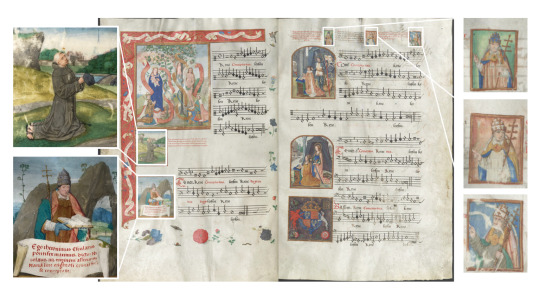

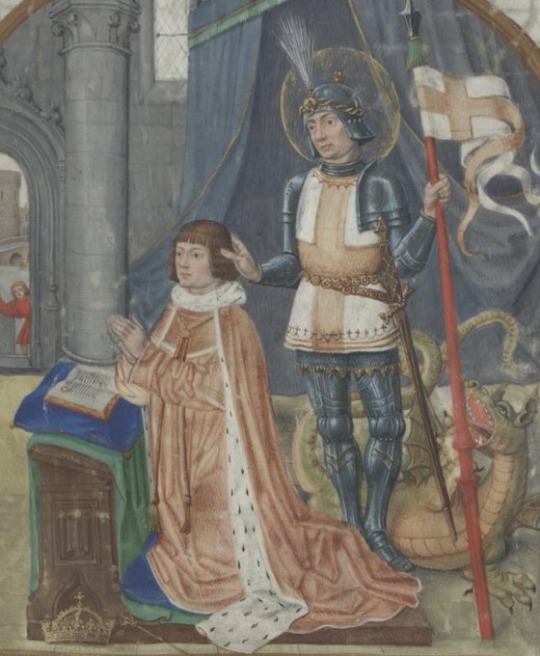
Queen Catherine of Aragon (with St. Catherine of Alexandria) and Henry VIII( with St. George) in a choir book by Petrus Alamire. The book was gifted to the King and Queen in 1513/18. Petrus Alamire was supposed to be a spy for Henry VIII, meant to watch Richard de la Pole, but he was actually a double agent who was loyal to de la Pole.
Sources:
https://thebrooklynarthistorian.com/2019/06/18/music-fit-for-a-king-or-two/amp/
https://www.sandiegoreader.com/news/2014/oct/09/classical-heard-first-time-500-years/
https://twitter.com/chloellene/status/1391376563883716613?s=20&t=6fuLxF3FUVEiSTBLJrrdkA (the tweet is where I found the close up image)
#katharine of aragon#house of tudor#house of trastámara#art#illuminated manuscript#petrus alamire#saint george#saint catherine of alexandria#saints#henry viii
114 notes
·
View notes
Text



ok, so, i was reading this sort of snark-review of the above movie (which i'm not going to search for because it just overall had little merit, not worth a reread) which cited a specific critique of this above scene ('the matter of religion'), that if elizabeth was told that 'religion' killed her mother her primary response would be confusion, her mother was killed on accusations of adultery, incest, and treason, etc. and also that no one would say this because this obviously was not true.
while technically correct-- obviously the charges leveled against anne were not ones of heresy (although the prevalence of the theory witchcraft was in the suggestion if not literal text of the indictment by 1998 could be the explanation here)-- i would actually defend this creative choice, as a historically sound perception, ie, actually, a sophisticated creative choice in the context of the historical sources available.
protestant martyrologists such as john foxe did rewrite anne into the pantheon of protestant martyrdom, as a symbol if not literal martyr, much like catholic hagiography adopted catherine of aragon as catholic martyr for having suffered for upholding papal primacy, even if not literally dying for this belief as more, fisher, the carthusians, etc. catholic polemicists would not view her as a 'martyr', obviously, but they did view her as a heretic who deserved to die for her heresy among 'other crimes', even if this was not in the official indictment. so, actually... yes, it would be plausible that a marian councilor might threaten elizabeth with the salient reminder that religion 'killed her mother'.
moreover, this movie exists in a post-ives world...it was ives who made mainstream the theory that anne's stance on the dissolution was the catalyst to her downfall, based on strong primary source analysis and timeline recreation of events. after this, we saw a watershed in tudor fiction as it came to portrayals of her... it forced some movement in that binary mold which had existed for so long, anne as either femme fatale or tragic romantic heroine/victim (maybe she was neither of these things, maybe she was, actually, entirely more). in this way, it can be argued, she did 'die for religion'; and even if you disagree, there's still an emotional truth and resonance to this scene (in that this was what certain people believed, whether they cast anne as the heroine or villain of the tale...anne as the victim of a religious conspiracy by 'papists', alexander ales only one among them, anne as the 'wellspring' of 'heresy' in england), even if not a literal paint by numbers 'historical accuracy'.
tl; dr in the words of the immortal florence welch: who's a 'heretic' now?
32 notes
·
View notes
Text
Among those believing that Anne Boleyn was innocent was Matthew Parker, her chaplain, who, when Elizabeth’s Archbishop of Canterbury, claimed that Anne’s soul was in “blessed felicity with God.” About six days before her arrest, he recalled, she asked him to look after her daughter, a plea he took seriously. He confided to Burghley, if he had not “been so much bound to the mother,” he would not have agreed to serve her daughter as archbishop.
Wicked Women of Tudor England: Queens, Aristocrats, Commoners, by Retha M Warnicke
36 notes
·
View notes
Text

or was it the grieving sister, the lady ashara? she threw herself into the sea, I'm told. why was that? for the brother you slew, or the child you stole?
562 notes
·
View notes
Text
The mention of Mary Norris on the household list probably refers to the daughter of the executed Sir Henry Norris who was implicated in the fall of Elizabeth’s mother. Mary was around ten years old in 1536 and was orphaned by the death of her father, since her mother had died when she was younger. It is possible she was placed in Elizabeth’s household as a way of providing for her in the aftermath of her father’s beheading, while her elder brother, Henry, was given over into the care of their uncle, Sir John Norris. Henry would later be well favoured by Elizabeth and brought into her inner circle, so it seems plausible that the same was true of his sister. Mary only remained with Elizabeth for a short time, however, for in 1537 her name can be found among those who attended the funeral of Jane Seymour, and she was given gifts of jewels after the Queen’s death, indicating that she was by then a member of Jane’s household.
Young Elizabeth: Elizabeth I and Her Perilous Path to the Crown, Nicola Tallis
7 notes
·
View notes
Text


Patrick Williams, Katharine of Aragon: The Tragic Story of Henry VIII's First Unfortunate Wife
#house of tudor#house of trastámara#katharine of aragon#cardinal campeggio#cardinal wolsey#patrick williams#pope clement vii
15 notes
·
View notes
Text
“As was usual, the queen’s women frequently encountered the gentlemen of the king’s privy chamber in the course of their duties. Equally naturally, flirtations sprang up, ran their short course and died as regularly as the waxing and waning of the moon. Among the king’s gentlemen in the winter of 1539 was Thomas Culpeper, much in favour with the king. Culpeper was the kind of man who enjoyed useful connections and pretty women, and among the queen’s maids of honour he had both. Katherine and Culpeper had got along well. But Katherine was not a stranger to flirtation, and apparently held firm against him: there would be nothing else unless he promised her something more concrete. This was not part of Culpeper’s plan, and he turned instead to other women. Katherine, unused to rejection, was shocked, sad and no doubt had to watch these other relationships blossom in front of her. ‘Her grief was such’, she later told him, ‘that she could not but weep in the presence of her fellows’, the other girls. But soon the king himself made his interest clear and it was not long before she was elevated above her wildest dreams, and far above Thomas Culpeper.
Queen Katherine chose to make him smart for his earlier rejection. One of his new conquests was Bess Harvey. Bess had previously served Queen Anne Boleyn, and had been among the group of women who had been to view the king’s ships at Portsmouth in August 1539. At some stage in the spring or summer of 1541, Queen Katherine gave Bess a gown of damask and sent Jane, Viscountess Rochford to Culpeper with a pointed message: ‘he did ill to suffer his tenement’ – Bess – ‘to be so ill-repaired’ and so Katherine ‘for to save his honesty’ had covered the cost on it. It was a bold and relatable, if petty, triumph and says much about Queen Katherine’s personality. We don’t know precisely when Katherine played this card, but at some stage after she became queen Katherine and Culpeper reconnected. Of itself this wasn’t necessarily a problem. Queens naturally encountered men who were not the king. They had to work with them: the queen’s council, over half of her household and the entirety of the king’s were men. To interact with men for the sake of politics, patronage and even friendship was normal, but Queen Anne Boleyn’s execution five years previously had shown that such relationships might be all too easily, even wilfully, misinterpreted.”
— Nicola Clark, The Waiting Game
7 notes
·
View notes
Text
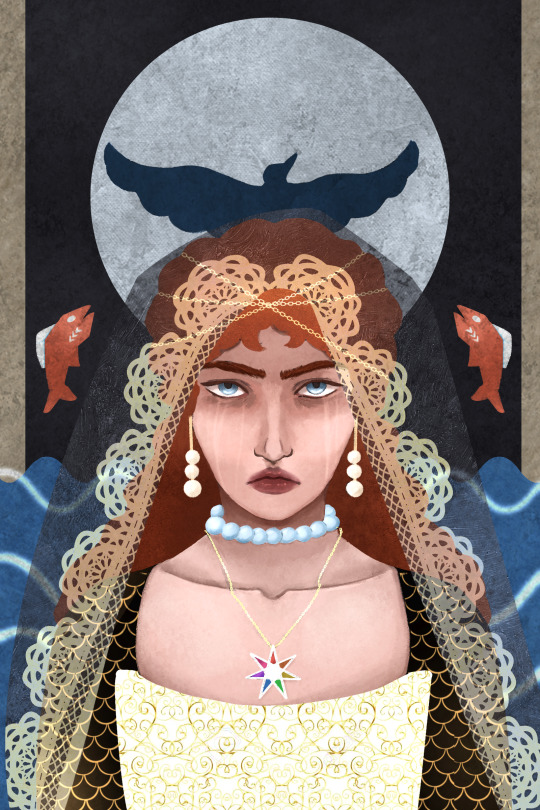
Lysa on her wedding day
819 notes
·
View notes
Text
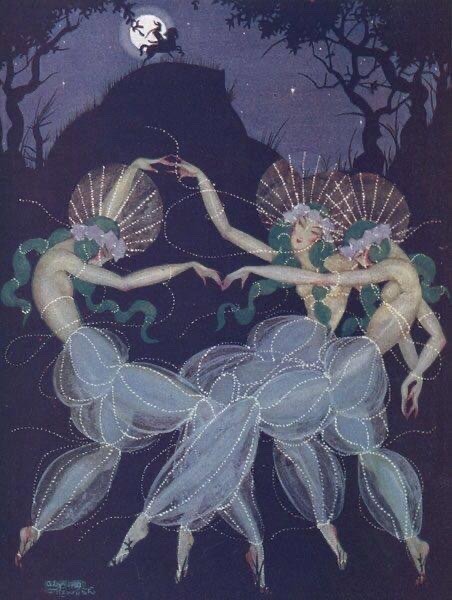
“Moon Madness” by Alexandre Rzewuski. Appeared in the Tatler magazine 12th April, 1922.
4K notes
·
View notes
Photo

pg3&4
World Class Vol. 1 No. 4
112 notes
·
View notes
Text
“To the Queen’s grace, my good mother, I have received your letters, “no less full of motherly joy for my towardness of reconciliation than of most prudent counsel for my further proceeding therein,” which of your goodness you promise to travel to bring to a perfection. Cannot express the comfort this has given her. Promises that from this day she shall neither be lacking in duty to her father, who has the whole disposition of her heart in his noble hand, nor in humble and obedient service to her Grace. Begs her, “with such acceleration as shall stand with your pleasure,” to have in remembrance her desire to attain the King’s presence.”
— Mary to Jane Seymour, June 1536 (via queenmarytudor)
30 notes
·
View notes
Photo

The Family of King Henry VII and Queen Elizabeth of York
Henry and their three sons -Arthur, Henry and Edmund- & Elizabeth and their four daughters -Margaret, Elizabeth, Mary and Katherine-. source
#henry vii#elizabeth of york#henry viii#arthur prince of wales#edmund tudor#margaret tudor queen of scot’s#elizabeth tudor#katherine tudor#mary the french queen#house of york#house of tudor#art
186 notes
·
View notes


